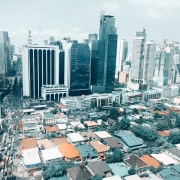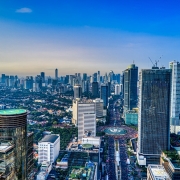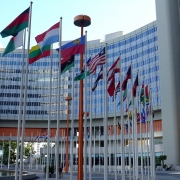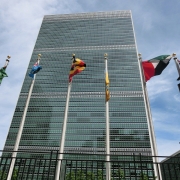When was Singapore’s bilingual policy implemented?
Topic of Study [For H2 History Students]:
Paper 2: Search for Political Stability
Section B: Essay Writing
Theme I Chapter 2: Approaches to National Unity
Historical context
Before independence was achieved in Singapore, its education system comprised of private vernacular schools and government-run schools. The former taught Chinese, Malay and Tamil, while the latter covered English.
On 8 December 1953, the British colonial government published a white paper (titled “Chinese Schools Bilingual Education and Increased Aid”) that proposed bilingual education in Chinese-medium schools. It suggested that financial assistance should be given to schools that taught the English language.
After Singapore attained self-government in 1959, then Prime Minister Lee Kuan Yew delivered a speech that highlighted the significance of bilingualism.
We have in Singapore about 320,000 students. Of these 51% are in English schools, 43 1/2% in Chinese schools, 5% in Malay schools and 1/2% in Tamil schools. If we do nothing about it, we shall produce citizens who can only communicate with those in their own language stream…
Hence the tremendous urgency of getting our students to be bilingual, or even trilingual. Malay is the national language and it should be possible, eventually, for everyone to understand each other through this language. But each racial and cultural group wants, at the same time, to study their mother tongue to keep their links with their cultural heritage. And the Government supports this. And for reasons of employment, many wish to study English as their first foreign language.
An excerpt from a speech by Prime Minister Mr Lee Kuan Yew at the Happy World Stadium, 8 December 1959.
As described by Mr Lee, English was taught as a common language for inter-ethnic communication. Also, this language was being emphasised on for business reasons. As for the ‘Mother Tongue’, it was necessary for ethnic communities to preserve their cultural heritage.
The Policy of Bilingualism in the 1960s
After Singapore became independent, the Malay, Mandarin, Tamil and English were recognised as the official languages in Singapore, as stated in Article 153A of the Singapore Constitution.
In 1966, the bilingual policy was implemented, in which all students were required to study English and a ‘Mother Tongue’ in schools. Over time, English became the common language for work and social interaction. Additionally, Mathematics and Science were taught in English.
Bilingualism must be emphasised in schools if we are to build a multi-racial society with a national identity…
By using the second language as a medium of instruction, children would be exposed to that language for a much longer period and, moreover, would be compelled to speak it, write it and use it as a tool of communication…
Excerpt from a speech by The Minister for Education, Mr. Ong Pang Boon, at the Annual Budget Statement of the Minister for Finance, 12 December 1968.
Reviewing the Bilingual Policy: The ‘Goh Report’
In 1978, then Deputy Prime Minister Goh Keng Swee and his team published a report (titled ‘Report on the Ministry of Education 1978’) that assessed the effectiveness of the education system in Singapore.
The report revealed that many students struggled to grasp two languages due to the lack of familiarity. For instance, nearly 85% of the Chinese students communicated in dialects at home. As such, English and Mandarin were relatively new to them.
On 5 March 1978, Nanyang University announced that it will prepare undergraduates for the same examination as the University of Singapore. this meant instruction in the English language and written examinations in that language.
An excerpt from the Report on the Ministry of Education 1978 by Dr Goh Keng Swee, 10 February 1979
As such, the New Education System was established in 1979, which included streaming at the primary and secondary levels. Besides, language proficiency was also considered for university admission.
What can we learn from this article?
Consider the following question:
– Assess the importance of education in supporting the Singapore Government’s efforts at forging national unity.
Join our JC History Tuition and learn to write essays for topics like Approaches to National Unity.
The H2 and H1 History Tuition feature online discussion and writing practices to enhance your knowledge application skills. Get useful study notes and clarify your doubts on the subject with the tutor. You can also follow our Telegram Channel to get useful updates.
We have other JC tuition classes, such as JC Math Tuition and JC Chemistry Tuition. For Secondary Tuition, we provide Secondary English Tuition, Secondary Math tuition, Secondary Chemistry Tuition, Social Studies Tuition, Geography, History Tuition and Secondary Economics Tuition. For Primary Tuition, we have Primary English, Math and Science Tuition. Call 9658 5789 to find out more.










